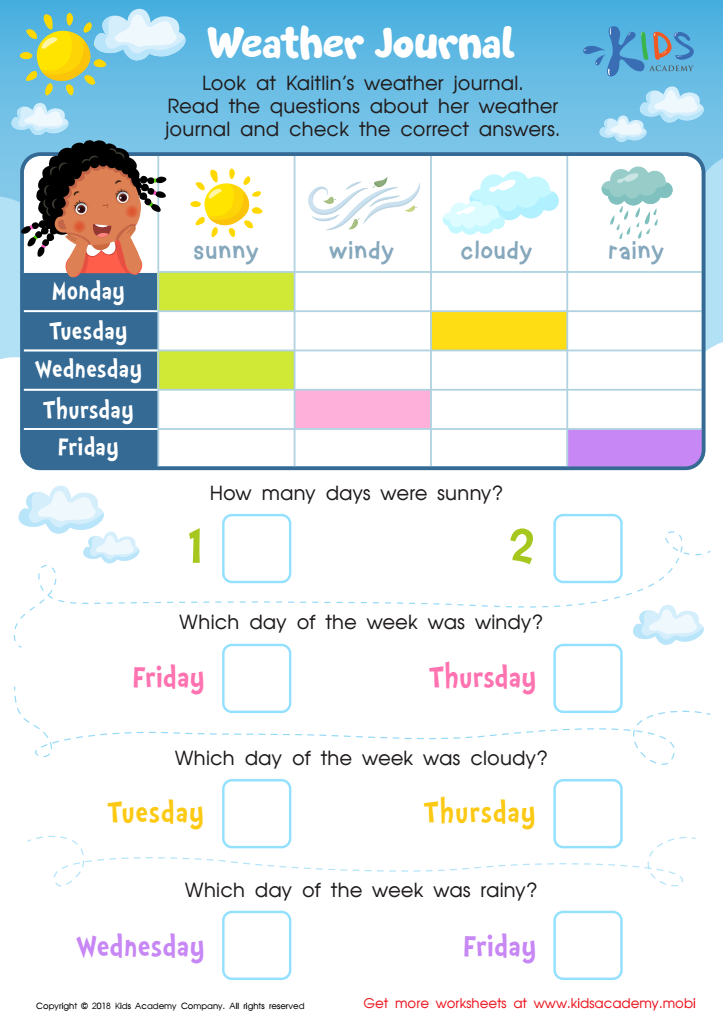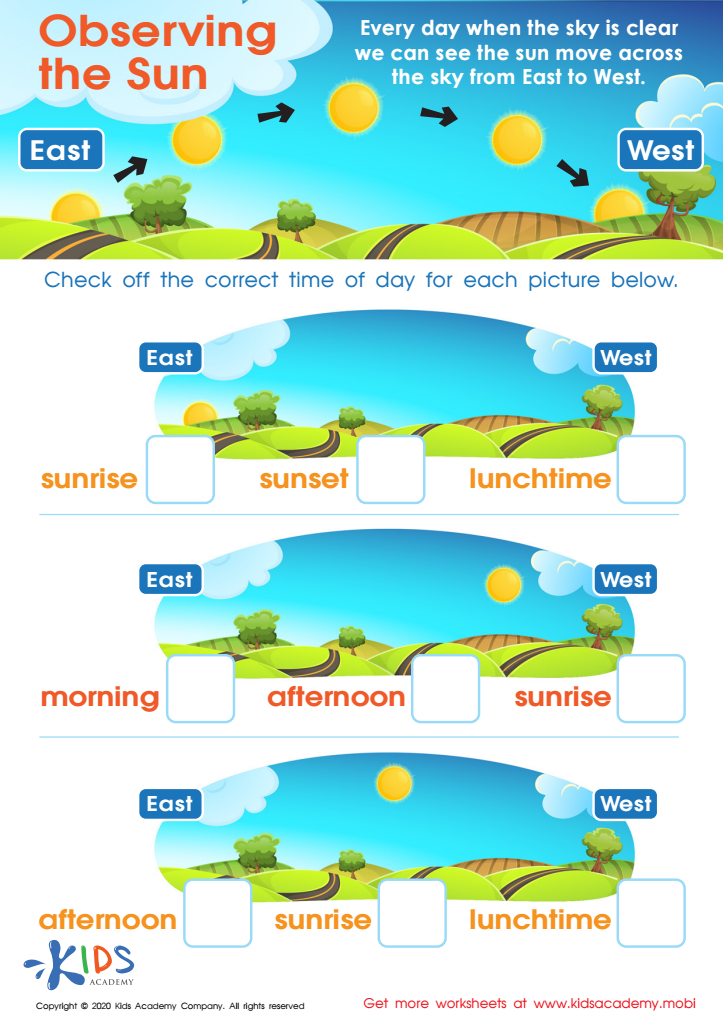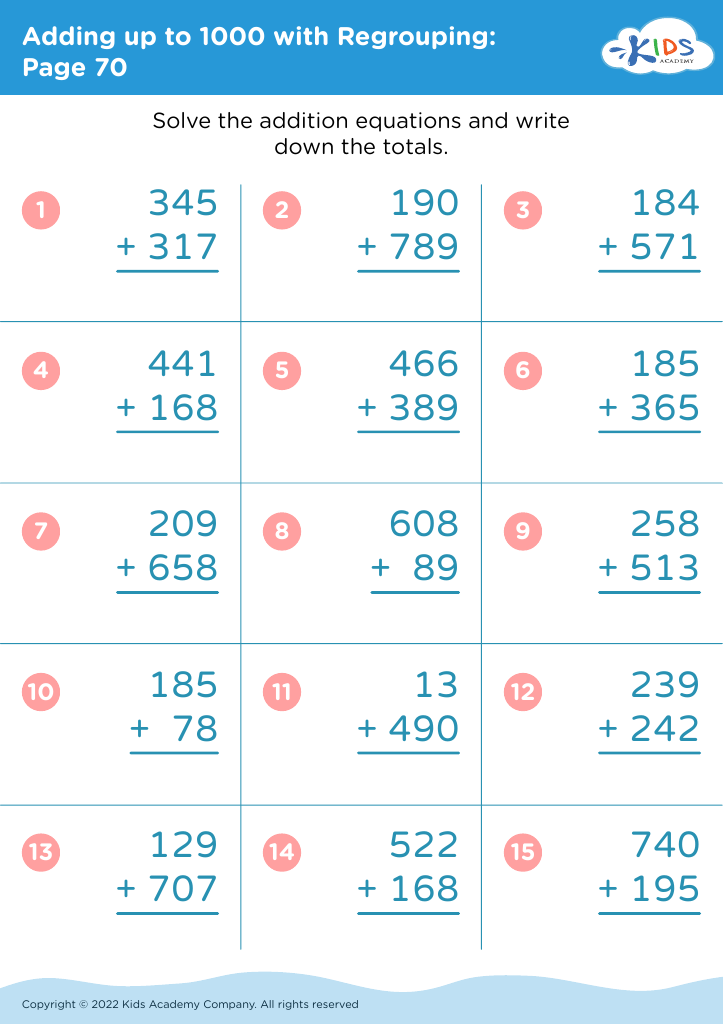Analyzing patterns Worksheets for Ages 3-7
3 filtered results
-
From - To
Discover a fun and engaging way to develop essential reasoning and analytical skills in your young learners with our "Analyzing Patterns Worksheets" for ages 3-7. These worksheets are thoughtfully designed to stimulate children's cognitive abilities while they explore colors, shapes, and sequences. Each activity encourages them to identify, create, and complete patterns, making learning interactive and enjoyable. Perfect for both teachers and parents, our resources foster critical thinking and problem-solving skills from an early age. Download our printable worksheets today and turn pattern recognition into an exciting adventure for your little ones, laying a strong foundation for future learning!


Weather Journal Worksheet


Observing the Sun Worksheet
Analyzing patterns is a crucial skill for children aged 3-7 as it lays the foundation for mathematical reasoning and critical thinking. For parents and teachers, encouraging this skill can foster a child's ability to recognize, predict, and understand relationships in their surroundings, enhancing cognitive development. By identifying patterns in shapes, colors, and numbers, children develop their observation skills, increasing their engagement and motivation in learning.
Moreover, pattern recognition aids in problem-solving and logical thinking, often manifesting in subjects beyond mathematics, including science and literacy. For example, recognizing rhythms in language helps children understand phonemic awareness, essential for reading development. Engaging children with pattern exercises can also improve their memory, as patterns often involve repetition, leading to better retention of information.
Additionally, analyzing patterns contributes to social-emotional development, fostering patience and persistence when solving problems. By collaborating on pattern-related activities, children learn to communicate and share ideas, building essential teamwork skills. Therefore, when parents and teachers prioritize the analysis of patterns, they not only enrich children's early learning experiences but also equip them with vital skills that scaffold future academic success and personal growth.
 Assign to My Students
Assign to My Students









.jpg)












